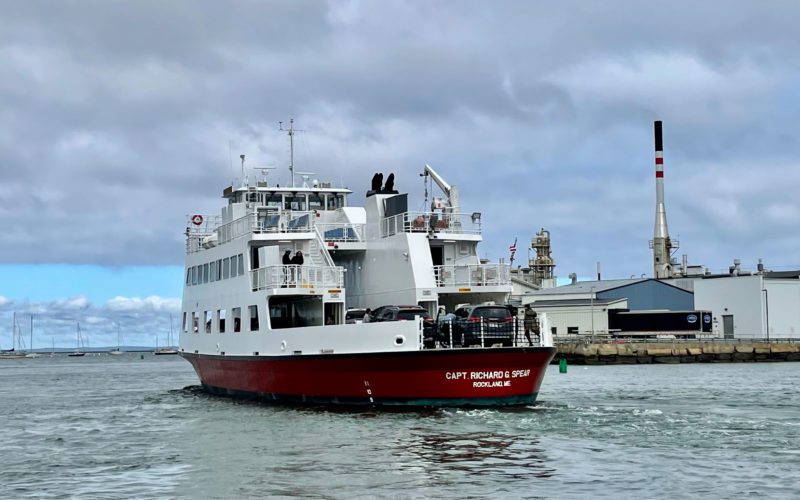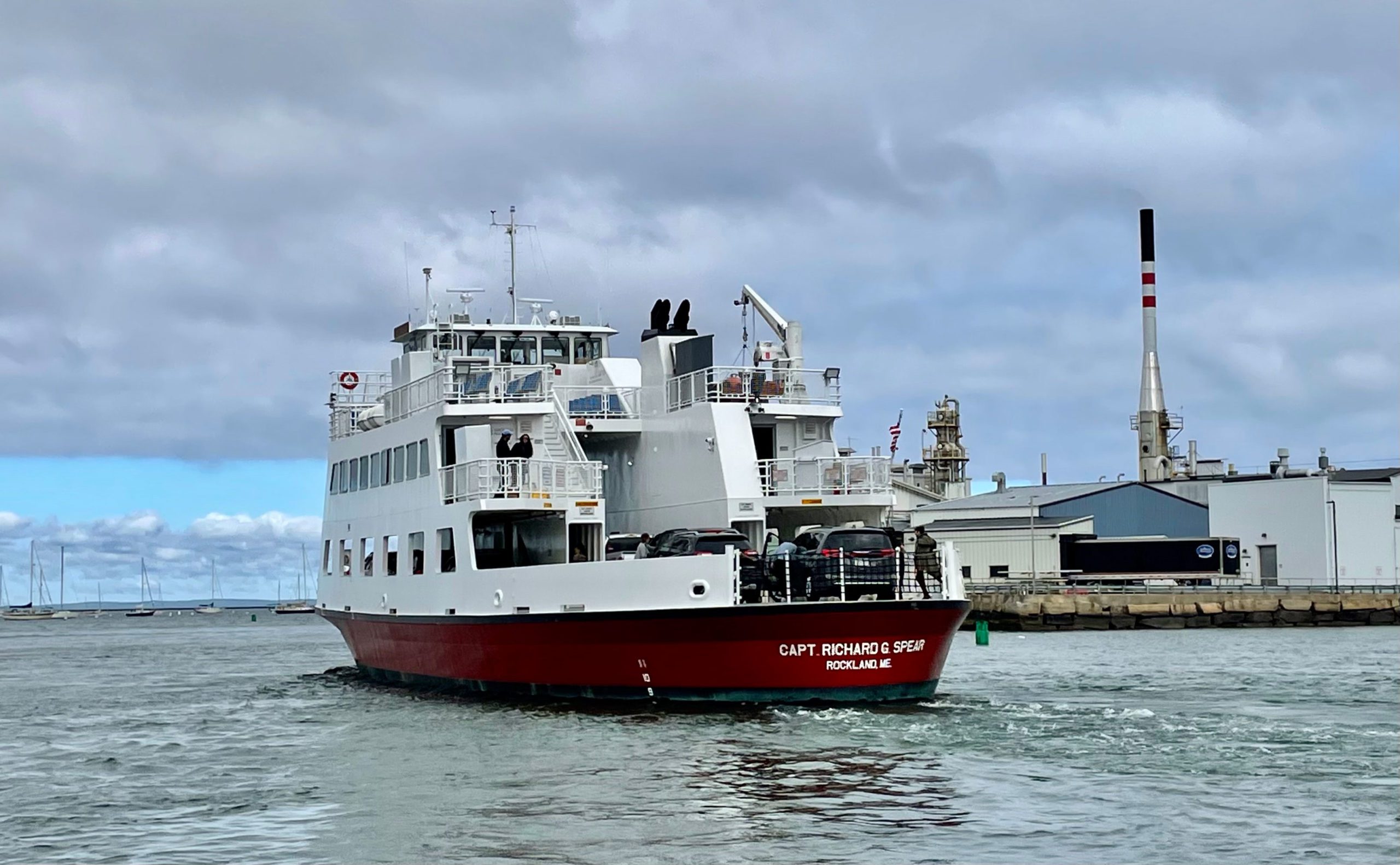
Maine State Ferry begins fleet replacement program
The Maine State Ferry Service has begun an ambitious fleet modernization program that will add up to four new vehicle ferries in less than a decade. Capt. Richard G. Spear is the first to enter service.
Washburn & Doughty of East Boothbay, Maine, delivered the 154-by-38-foot double-ended steel ferry earlier this year using a design from Gilbert Associates of Braintree, Mass. It entered service in May between Rockland and Vinalhaven in Penobscot Bay.
Propulsion on the 23-car, 250-passenger ferry comes from twin Caterpillar diesel engines driving four-bladed stainless-steel propellers through steel shafts. It cruises at about 12.5 knots and its top speed approaches 14.
Mark Higgins, general manager of the Maine State Ferry Service, said the vessel is performing admirably.
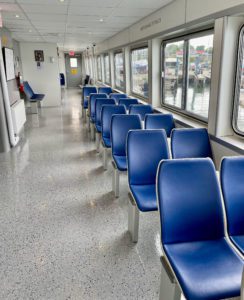 “Our passengers love it and our crews love it. It handles well,” Higgins said in August. “And we have found that we can run at reduced rpms to conserve fuel and still make 12.5 knots while burning about 18 gallons per engine per hour.”
“Our passengers love it and our crews love it. It handles well,” Higgins said in August. “And we have found that we can run at reduced rpms to conserve fuel and still make 12.5 knots while burning about 18 gallons per engine per hour.”
The Maine ferry system operates six routes, primarily in Penobscot Bay, and has a fleet of seven vessels. Its busiest is the 3.1-mile journey between Lincolnville and Islesboro, followed by the 15-mile Rockland-to-Vinalhaven route. Capt. Spear has operated on both runs this summer.
Ridership data for 2019, the last year before the Covid-19 pandemic, shows state ferry vessels carried 453,000 people and 170,000 vehicles. Mid-year data from 2022 shows passenger and vehicle demand has more or less rebounded to pre-Covid levels.
Capt. Richard G. Spear is named for a legendary Maine mariner and longtime state ferry service manager who died in 2018. His 60-year maritime career began at Maine Maritime Academy and included World War II service in the merchant marine, and 40 years of service to the Maine ferry service.
His namesake vessel is the first newbuild for the state ferry service since the 2012 delivery of Capt. E. Frank Thompson, which shares a similar design. John Gilbert, principal of Gilbert Associates, said early reviews from passengers and crew have been positive.
“It’s a new keel-up design — not something we had and adapted. It’s a double-chine steel displacement monohull,” he said via email, adding that the design was “pretty straightforward for us.”
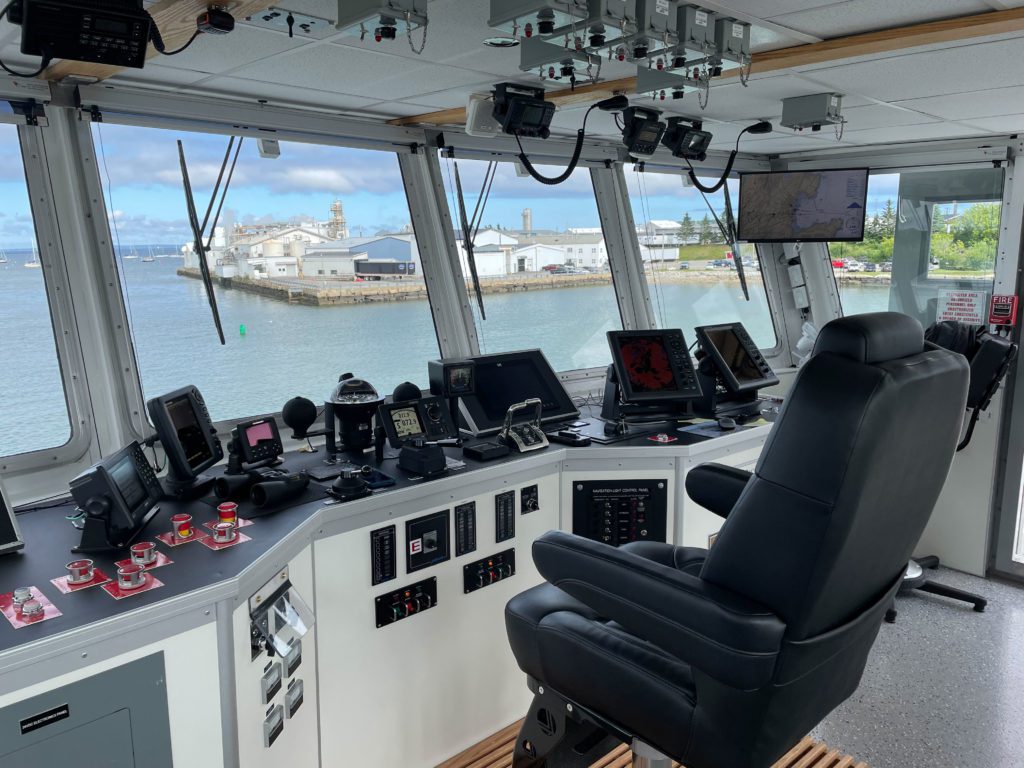
Its forthcoming sister ferry, the future Capt. Almer Dinsmore, is anything but ordinary. It shares the same hull and dimensions, but the vessel features a unique hybrid driveline. Propulsion will come from twin 600-hp Caterpillar C18 engines paired with electric boost motors installed on the Reintjes gearboxes, along with batteries that can store 400 kilowatt-hours of electricity.
“With the Tier 3 engines, the hybrid-assist and the stored power, we are looking at a 35 to 40 percent reduction in fuel consumption,” Higgins said. “We expect to cut our carbon footprint in half compared to the Thompson.”
Senesco Marine of North Kingstown, R.I., is currently building the vessel, and delivery is tentatively scheduled for late 2023. BAE is supplying motors, key electrical components and integration for the future Dinsmore.
Chris Senner, vice president of Reinjtes distributor Karl Senner, said the electric motor ties into a power take-in on the gearbox. “The PTI is variable, meaning it has a ratio that can be selected to use a compact high-speed motor to operate efficiently at slow speeds,” he said recently. “They will be able to shut off the main engines and run on electric power in and around the harbor for zero emissions.”
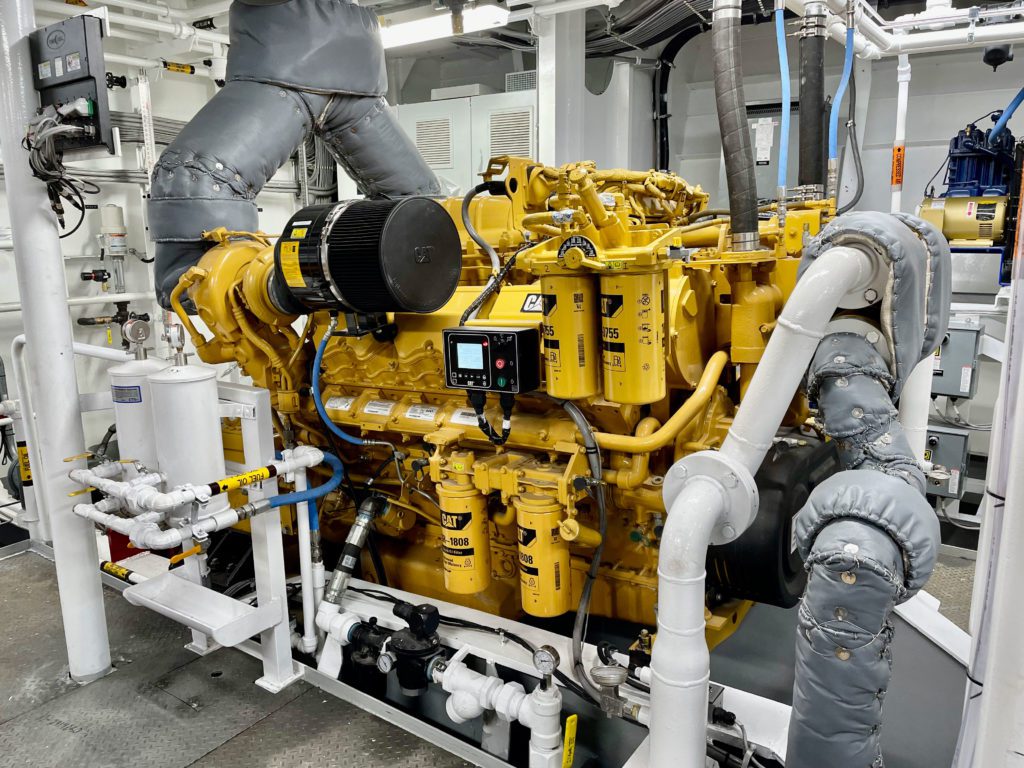
Separately, Steiner Shipyard of Bayou La Batre, Ala., won a contract to build a 105-foot steel-hulled conventional ferry that will serve Matinicus Isle. The vessel will hold nine vehicles on the 2.5-hour ride. State law mandates at least 36 trips per year to the rugged island some 23 miles into the Atlantic Ocean.
When not carrying vehicles to Matinicus, the new ferry will be used as a utility vessel that carries special cargoes and hazardous materials such as fuel. Delivery is expected in mid-2024.
In September, the ferry system awarded a design contract for a 40-vehicle, 225-passenger, fully electric ferry to Gilbert Associates. The vessel would be among the first of its kind in Maine and one of the first electric ferries operating on the East Coast.
Higgins expects the vessel will be equipped with azimuthing drives on either end for enhanced maneuverability and variable-speed generators to recharge onboard batteries when shore power is not available. Delivery is tentatively expected in 2026.
In the meantime, the ferry service is deriving increased efficiencies from Capt. Richard G. Spear. The new vessel can hold at least six more vehicles than Captain Charles Philbrook, the ferry it replaced, and burns less gas and generates lower emissions, too.
“We basically got a boat that is 25 percent bigger and burns the same amount of fuel,” Higgins said.
Capt. Spear has three vehicle rows on its main deck, with interior passenger spaces one level up. Its covered passenger spaces on the port and starboard sides have standard seats, some with tables, and many with electrical plugs. The open upper deck offers spectacular views of the Maine coast.
The engine space has an enclosed control room for the engineer, a feature lacking on other ferries in the fleet, according to Spear engineer Jack Olson. The space also has a separate workshop, ample storage and a crew lounge.
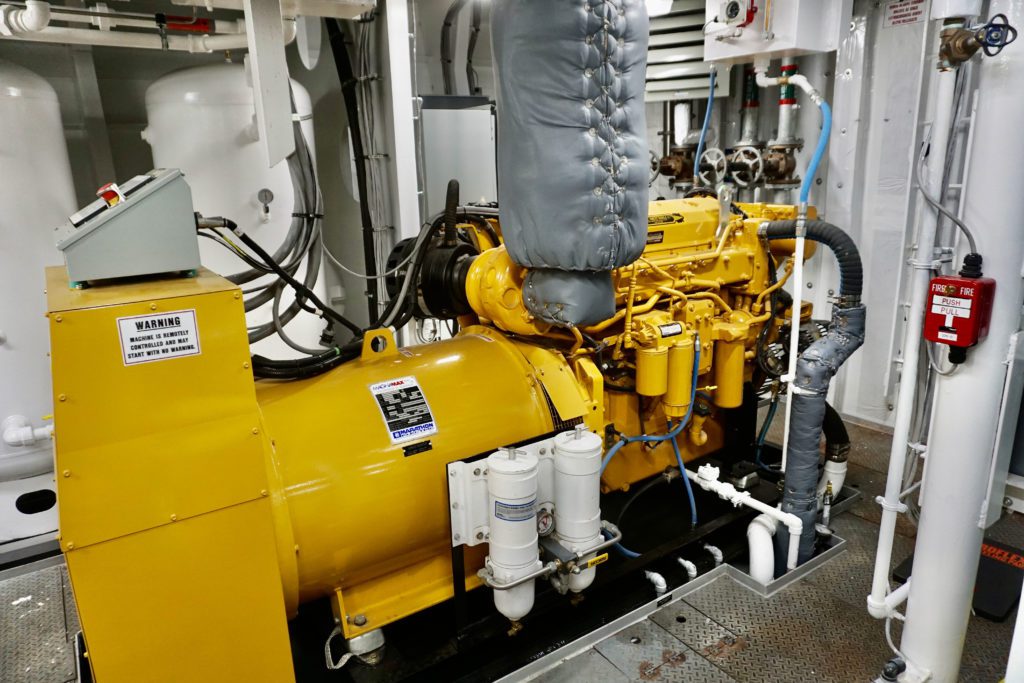
Maine State Ferry has an all-Caterpillar fleet. Capt. Spear is powered by two 750-hp C32 engines turning four-bladed Sound propellers through Twin Disc reduction gears. R.A. Mitchell supplied the vessel’s four gensets. They include two John Deere 99-kW units for ship service power, a 65-kW emergency genset, and a 300-kW John Deere unit that supplies power to an electric Schottel bow thruster used during some docking evolutions.
The upper deck has a Coastal Marine Equipment davit used to raise and lower a Zodiac Milpro rescue boat with 50-hp Mercury outboard engine.
The wheelhouse is equipped with a Furuno navigation suite with radar, AIS and GPS along with Nobeltec Timezero navigation software. Icom supplied the VHF radios.
Washburn & Doughty, which has built numerous sturdy ship-assist tugboats over the last decade, built Capt. Spear at its East Boothbay, Maine facility. Katie Doughty Maddox, the shipyard’s president, said the project had its share of challenges.
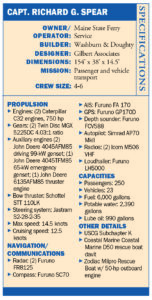 “The meat of the project took us through Covid and all of the complications that came with that, followed by supply chain challenges at the end,” she said in a June interview. “But we are very glad to have it delivered and working.”
“The meat of the project took us through Covid and all of the complications that came with that, followed by supply chain challenges at the end,” she said in a June interview. “But we are very glad to have it delivered and working.”
Capt. Spear is the third ferry the shipyard has built in recent years. Others are operating on Shelter Island, N.Y., and Chebeague Island in southern Maine.
Capt. Aaron Sheridan said the vessel handles well and has plenty of power. There are a number of improvements throughout the vessel, including defrosters and wipers on the wheelhouse windows that he said greatly improve visibility.
Sheridan is a former lobsterman who joined the ferry service in 2005. When asked about the ferry’s performance, he responded with characteristic terseness. “It seems to be working out well.” •

